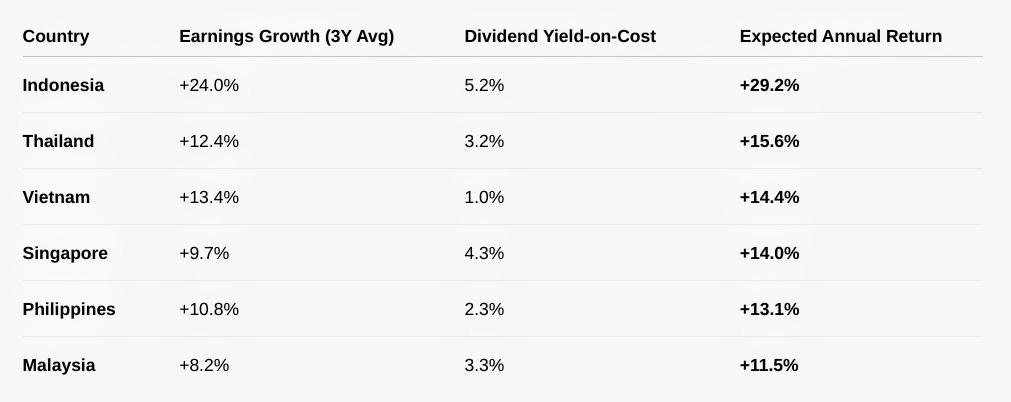Southeast Asia Market Insights: From Reunification to Re-Rating — Vietnam Leads a Region of Quiet Strength
May 2, 2025 Edition
Introduction: A Celebration, a Snapshot, and a Surprising Outperformance

On April 30, 2025, Vietnam marked the 50th anniversary of its reunification — a historic moment that closed a brutal chapter of war and opened the door to an era of growth, peace, and transformation. For those of us who’ve watched Vietnam evolve over decades, the progress has been nothing short of breathtaking.
In 1975, Vietnam had:
GDP of just US$6.3 billion
Per capita income of US$143
A 78% poverty rate
Only 44 million people
Zero public companies
Zero stock market presence
Fast forward to 2025:
GDP stands at US$431 billion
GDP per capita: US$4,293
Poverty rate: 3%
Population: 100 million
Public companies: 691
Market capitalization: US$206 billion
And get this: 16.2 million Vietnamese — 16% of the population — are stock market investors, the highest participation rate in all of Asia.
These are more than statistics. They’re milestones in a story of grit, resilience, and aspiration — a story that’s helping shape the broader narrative of Southeast Asia’s rise in the global investment arena.
The International Investor’s Southeast Asia Index: A Quiet Climb
Launched on December 31, 2024, The International Investor’s Southeast Asia Index tracks seven U.S.-listed ETFs, or exchange-traded funds, that represent Southeast Asia’s major economies. Since inception, it has grown 2.6%, or US$262 in market value, pushing a US$10,000 portfolio to US$10,262 as of May 2, 2025.

That may not sound like much — until you compare it to the broader U.S. equity market, which has slid -5.9% over the same period. Southeast Asia, in contrast, is proving steady and quietly resilient.
Here’s how the individual country ETFs have performed:
Singapore: +13.9%
Philippines: +8.9%
Vietnam: +3.7%
ASEAN’s Top 40 Companies: +3.0%
Malaysia: +1.3%
Indonesia: -4.6%
Thailand: -8.0%
The results are mixed — but that’s exactly the point. Markets are still catching up to the reality of long-term fundamentals.
What the Market Misses: Earnings Power Is Accelerating
To paraphrase Warren Buffett: Don’t just look at stock prices. Look at how the businesses are performing.
Analysts forecast an average annual earnings growth of 13.1% for the index over the next three years. Add a dividend yield-on-cost of 3.3%, and you’re looking at a projected annual return of 16.4% — not bad for a region largely ignored by the headlines.
Let’s dig deeper:
Yes, Indonesia leads in potential returns — but don’t overlook Vietnam. It’s showing solid growth and gradually rising dividends, powered by a fast-modernizing economy and an increasingly savvy investor base.
Vietnam: A Market, a Movement, a Model
Vietnam’s journey from a war-ravaged nation to an economic engine is nothing short of miraculous. And today, its stock market is not just a financial tool — it’s a symbol of aspiration.
Sixteen percent of the population is invested in equities. That’s not just high for Asia — it’s revolutionary for a country that had no market to speak of just 50 years ago.
The stock exchange now lists nearly 700 companies, many of which reflect a booming middle class, increasing industrial sophistication, and a digital-native consumer base. In many ways, Vietnam offers a template for the future of Southeast Asia.
Conclusion: Value Is Hiding in Plain Sight
The Southeast Asia Index tells a quiet but powerful story: investor sentiment may be cautious, but business performance is robust, and valuations are attractive. That combination creates a gap — and gaps are where long-term investors make their money.
This region is home to 670 million people, rising middle classes, digitizing economies, and governments increasingly focused on reform and resilience. As Vietnam’s 50-year transformation shows, change doesn’t happen overnight — but when it does happen, it compounds.
The market may be sleeping on Southeast Asia. You don’t have to.




